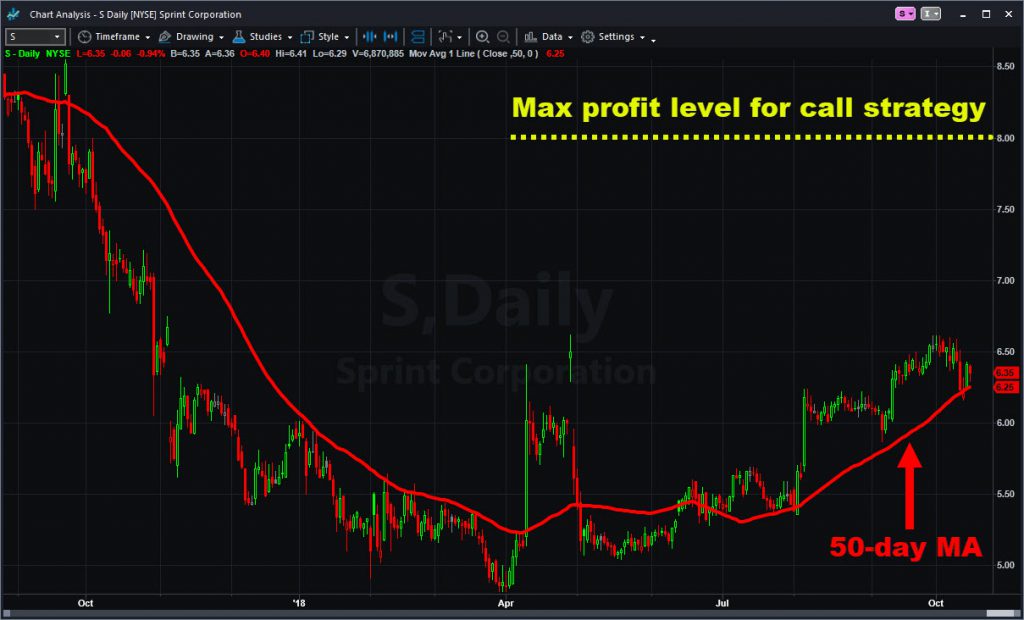Cell phones and natural gas. Those are some big trades in the options market today.
Let’s start with Sprint (S), which saw the purchase of 20,000 May 7 calls for $0.50 and the sale of 40,000 May 8 calls for $0.21. It’s a little complicated, so here’s a breakdown of what the investor seems to be thinking:
- He or she now has the right to buy 2 million S shares for $7 by expiration next spring, regardless of how high the stock may be at the time.
- They will have to deliver 4 million shares for $8 if they’re above that level.
- An even $1 will be received for each of the 2 million shares if it closes at or above $8. It only cost $0.08 to control that move, translating into a potential profit of 525 percent. (They paid $0.50 and collected $0.21 twice.)
- There’s risk of being short 2 million shares over $8 because they sold 20,000 more calls at the higher strike than the number of contracts owned at $7. However, what if he or she already owns a boatload of stock? Then we’re talking about an institutional investor fattening gains on a rally in a name they’re already long.
Want to learn more about options? Sign up for our “Options Stars 2018” symposium in Chicago this month.
S fell 0.94 percent to $6.35 in afternoon trading. Remember this mobile-communications company is currently in the process of trying to win regulatory approval for a merger with T-Mobile US (TMUS). So today’s options trade may be a low-cost bet on the deal going through next year.

Next, Range Resources (RRC). Natural-gas prices have squeezed higher in the last month on concerns about low inventories and increased shipments via tanker. An investor took an even longer-term view on RRC with a bullish “synthetic long” strategy reaching out more than a year into the future:
- Some 24,298 January 2020 13 puts were sold for $1.13.
- A block of 20,610 January 2020 25 calls were bought at the same time for $1.40.
In return for the $140,000 net cost, the investor now has the right to control as many as 2.4 million RRC shares. He or she also has downside risk below $13 because they’re short puts.
Why do it? If RRC goes nowhere and remains between $13 and $25 through expiration the entire position will become worthless. But if it does rally, the strategy offers the potential for huge gains. This way, the institutional investor is positioned to catch the move with only a small cash outlay upfront.
RRC rose 5.37 percent to $17.66.
In conclusion S and RRC have two of the largest transactions in the options market today. Both are sophisticated with plenty of potential risk. But they’re both bullish and suggest big money is looking for long-term gains in both names.
DISCLOSURE: This post is intended for educational purposes only. Options trading may not be suitable for all investors.























